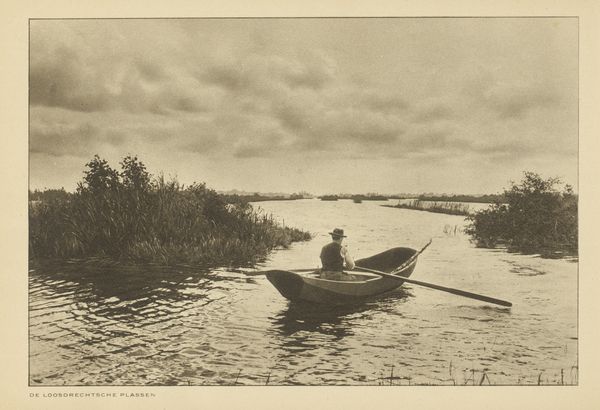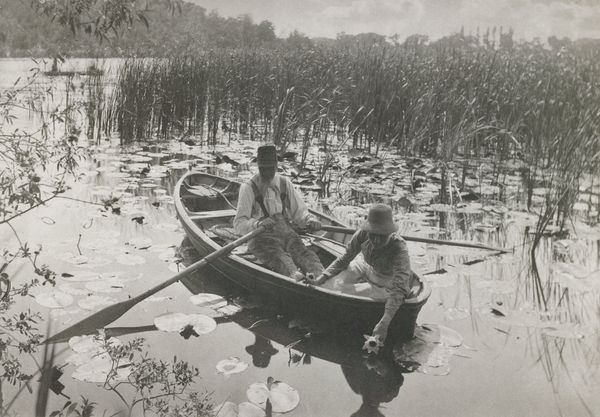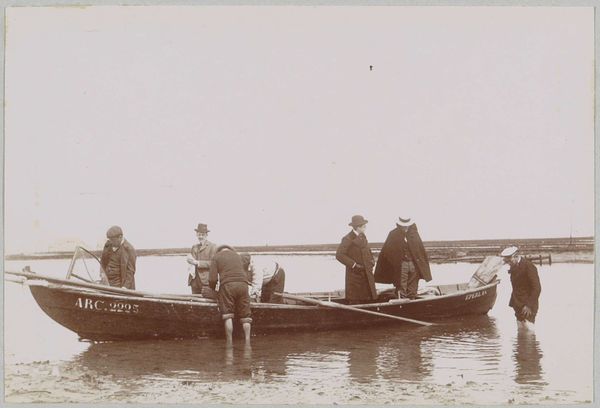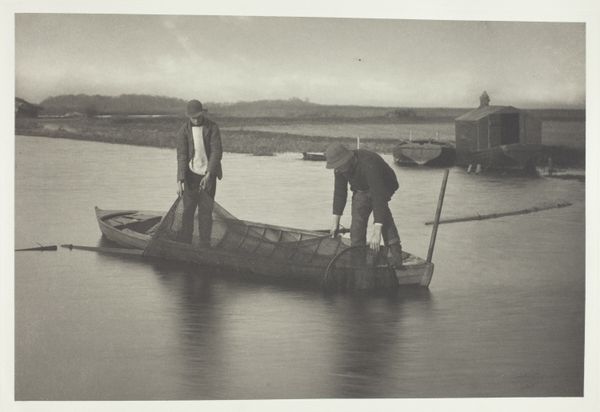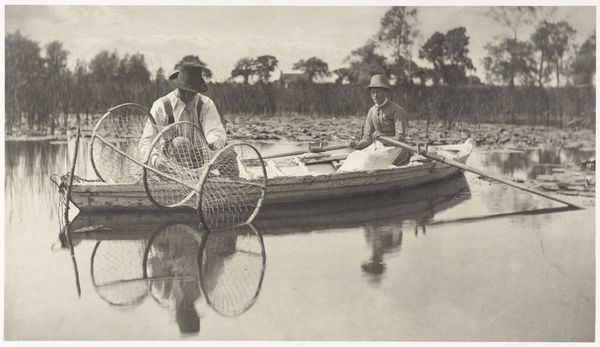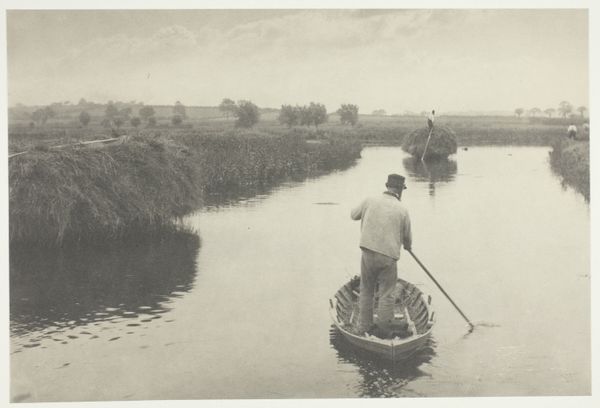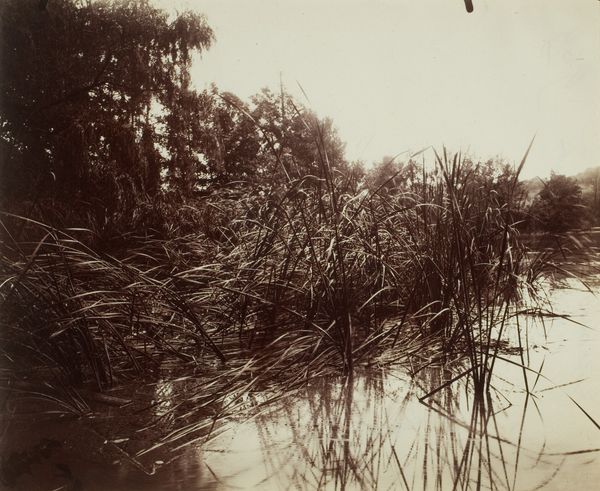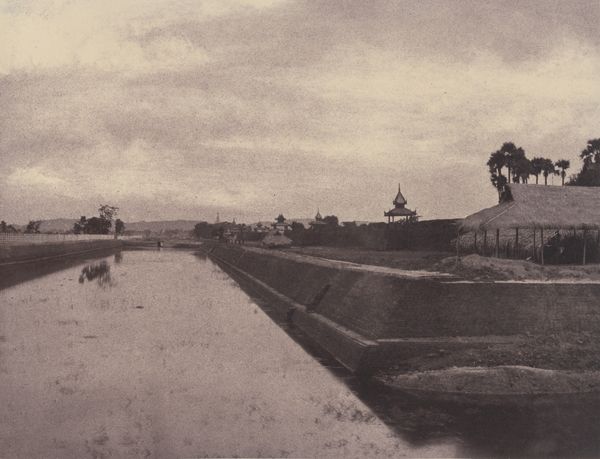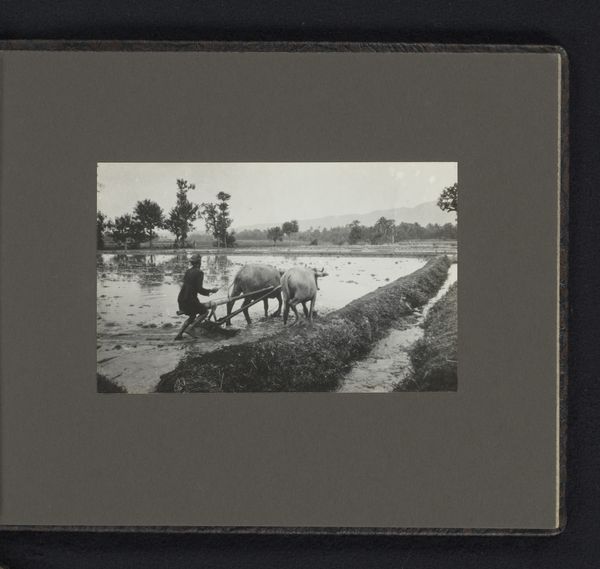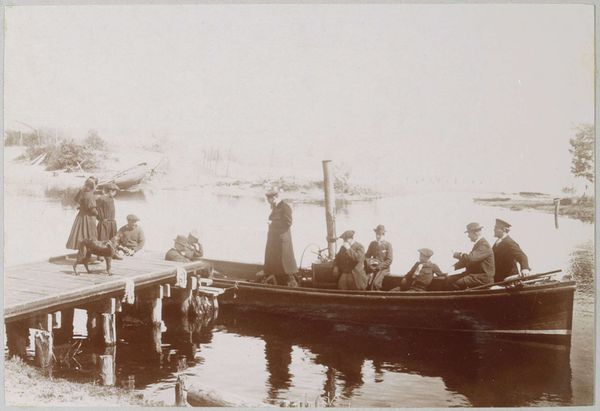
print, photography
#
black and white photography
#
pictorialism
# print
#
landscape
#
photography
#
monochrome photography
#
genre-painting
#
monochrome
#
monochrome
Dimensions: image: 11.1 × 14.3 cm (4 3/8 × 5 5/8 in.)
Copyright: National Gallery of Art: CC0 1.0
Editor: This photograph, "Children of the Broad" by Peter Henry Emerson, likely taken between 1890 and 1893, presents a monochromatic scene of figures in a boat. There's a dreamy quality to it; the soft focus and muted tones evoke a sense of quiet reflection. What symbolic readings do you find in this seemingly simple composition? Curator: The quiet reflection you noticed is key. Emerson, aligning with Pictorialism, wasn't merely documenting; he was evoking a feeling, a memory. Consider the title: "Children of the Broad." The 'broad' likely refers to the Norfolk Broads, a network of rivers and lakes. Water, in iconography, is often linked to the subconscious, to fluidity and change. These children, then, are children *of* that subconscious, of the flowing present, deeply rooted to place and history. What future do you think he sees for these children and the region they inhabit? Editor: So, they're not just *in* the landscape, but almost born *from* it? The hazy atmosphere makes me wonder if that’s romanticizing a very hard life, though. Were these images always received positively? Curator: That's the tension in Emerson's work. He championed the rural working class, yet through an aesthetic lens. There's a nostalgia inherent in Pictorialism, a looking back. The soft focus almost veils the realities of rural poverty, presenting a selective memory. These images can evoke a complicated psychological response. Does knowing that alter your initial perception of tranquility? Editor: It does. It adds a layer of complexity. I now see the tranquility as perhaps a carefully constructed, even idealized, image. It really brings home how photography, even in its early days, could be used to shape a specific narrative. Thanks! Curator: And it reminds us to always look beyond the surface of any image, to consider its cultural context and the stories it chooses to tell – and perhaps, those it chooses to omit. A great reminder for us all.
Comments
No comments
Be the first to comment and join the conversation on the ultimate creative platform.

